ĐẶC ĐIỂM LÂM SÀNG, CẬN LÂM SÀNG VÀ ĐỘT BIẾN GEN Ở NGƯỜI BỆNH UNG THƯ ĐẠI TRỰC TRÀNG ĐIỀU TRỊ TẠI BỆNH VIỆN ĐẠI HỌC Y HÀ NỘI
Nội dung chính của bài viết
Tóm tắt
Đặt vấn đề: Ung thư đại trực tràng (UTĐTT) là một trong những bệnh lý ác tính hàng đầu với tỷ lệ mắc và tử vong ngày càng gia tăng, hiểu biết về đặc điểm lâm sàng, cận lâm sàng và đột biến gen cần thiết để tối ưu hóa chiến lược chẩn đoán và điều trị. Mục tiêu: Mô tả đặc điểm lâm sàng, cận lâm sàng và đột biến gen ở bệnh nhân UTĐTT và khảo sát mối tương quan giữa đột biến gen và một số đặc điểm cận lâm sàng. Đối tượng và phương pháp: Nghiên cứu mô tả cắt ngang hồi cứu và tiến cứu trên 60 bệnh nhân UTĐTT có mẫu mô ung thư được lưu trữ và có kết quả xét nghiệm gen. Kết quả: Đau bụng và phân máu là hai triệu chứng phổ biến của UTĐTT. Đặc điểm khối u trên nội soi đại trực tràng hay gặp nhất ở trực tràng (43,3%), dạng sùi (71,7%) và độ biệt hóa vừa (85%). Marker ung thư CEA và CA 19-9 tăng gặp ở 67% và 40% các trường hợp chẩn đoán. Tỷ lệ đột biến KRAS cao nhất chiếm 40%, đứng thứ hai là tỷ lệ đột biến gen BRAF 8,3%. Phát hiện các đột biến khác trên các gen PIK3CA, TP53, APC, NRAS, PTEN với tần suất thấp lần lượt là 5%; 3,3%; 3,3%; 1,7% và 1,7%. Có mối liên quan có ý nghĩa thống kê giữa đột biến gen và vị trí khối u. Không có mối liên quan giữa đột biến gen với mức độ biệt hóa và marker ung thư. Kết luận: Việc mô tả đặc điểm lâm sàng, cận lâm sàng kết hợp hồ sơ phân tử khối u bằng công nghệ giải trình tự gen thế hệ mới cung cấp cái nhìn bao quát về bộ gen ung thư từ đó hướng đến cá thể hóa điều trị bệnh nhân.
Chi tiết bài viết
Từ khóa
Ung thư đại trực tràng, đột biến gen, NGS, lâm sàng, cận lâm sàng, điều trị đích
Tài liệu tham khảo
2. Morgan E, Arnold M, Gini A, et al. Global burden of colorectal cancer in 2020 and 2040: incidence and mortality estimates from GLOBOCAN. Gut. 2023;72(2):338-344.
3. Bùi Ánh T. Nghiên cứu đặc điểm lâm sàng, cận lâm sàng và tình trạng đột biến gen KRAS trong ung thư đại trực tràng tại bệnh viện K. 2017.
4. Aakif M, Balfe P, Elfaedy O, et al. Study on colorectal cancer presentation, treatment and follow-up. International journal of colorectal disease. 2016;31:1361-1363.
5. Dụ NK. Nghiên cứu đặc điểm lâm sàng, cận lâm sàng và đột biến gen kras, braf ở bệnh nhân ung thư đại trực tràng. Luận án tiến sĩ y học, Trường Đại học Y Hà Nội. 2017;
6. Saharti S. KRAS/NRAS/BRAF mutation rate in Saudi academic hospital patients with colorectal cancer. Cureus. 2022;14(4)
7. Bayle A, Basile D, Garinet S, et al. Next-generation sequencing targeted panel in routine care for metastatic colon cancers. Cancers. 2021;13(22):5750.
8. Salem M, Weinberg B, Xiu J, El-Deiry W, Hwang J, Gatalica Z. Comparative molecular analyses of left-sided colon, right-sided colon, and rectal cancers. Oncotarget. 2017; 8 (49): 86356–68.


